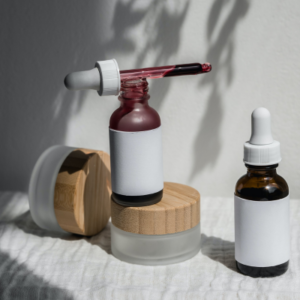Healthy Skin
Should you try skin cycling in midlife? Here’s what the experts think
Wondering what skin cycling is – and whether it’s of any benefit to mature skin?
With so many skincare products out there, it can be tempting to slather on all of our beauty buys in one sitting. However, we run the risk of overloading our complexions with potent active ingredients, such as retinol or acids, when we use these all together night after night. As a result, we may find ourselves facing skin barrier issues such as dryness, redness and breakouts.
But, skin cycling incorporates rest days into our skincare routine to give our complexions a break from actives. This helps to avoid irritation, allowing skin to rest and recover from potent ingredients. Not only that, it’ll do the bank account a favour, too!
To get the low-down on all of the pros and cons of skin cycling for mature skin, we chatted with Dr Ifeoma Ejikeme, skin expert and Adonia Medical Clinic director and founder. Here’s everything you need to know.
 What is skin cycling?
What is skin cycling?
“Skin cycling involves alternating between active skincare ingredients and allowing the skin to rest and recover,” explains Dr Ejikeme.
“It’s a regimen where specific products are designated for particular days instead of using all products daily.
“This approach aims to balance skincare usage and give the skin periods of rejuvenation for optimal health and resilience.”
How do we get started in midlife?
If you want to give skincare cycling a whirl, Dr Ejikeme advises midlife women to “try skin cycling by gradually reducing the number of skincare products used and giving their skin periods of rest in between.”
She adds: “The goal is to allow the skin to regulate its natural oil production, maintain hydration levels, and improve overall skin health.”
As for the products, Dr Ejikeme advises that an effective mature skincare routine should be made up of:
- Gentle cleanser: a mild, non-stripping cleanser to cleanse the skin without causing irritation or dryness.
- Hydrating moisturiser: a lightweight, hydrating moisturiser to keep the skin hydrated and supple.
- Sunscreen: a broad-spectrum sunscreen with SPF 30 or higher.
- Active treatments spread through the week: gentle exfoliants or masks can be used occasionally to help remove dead skin cells and promote skin renewal.
 Your weekly skin cycling routine:
Your weekly skin cycling routine:
Wondering what kind of products to apply and when? Dr Ejikeme has broken it down into:
Monday, Wednesday and Friday:
- Morning: Gentle cleanser, antioxidant serum, moisturiser, followed by sunscreen.
- Evening: Cleanse with a gentle cleanser, followed by moisturiser, and skin active such as retinol
Tuesday, Thursday and Saturday
- Morning: Gentle cleanser, antioxidant serum, moisturiser, followed by sunscreen.
- Evening: Cleanse with a gentle cleanser, followed by active such as salicylic acid or glycolic acid
Sunday
- Morning: Cleanse with a gentle cleanser, followed by moisturiser and sunscreen.
- Evening: Cleanse with a gentle cleanser, followed by moisturiser
 What are the benefits of skincare cycling?
What are the benefits of skincare cycling?
Dr Ejikeme advises that skin cycling can come with a plethora of benefits for mature complexions – when done correctly.
Not only does skin cycling provide a more sustainable approach to skincare by reducing our dependency on multiple products, it may reduce skin sensitivity and irritation. Plus, it may improve the overall appearance and texture of the complexion.
That being said, like most skincare trends, skincare cycling isn’t for everyone.
“Skin cycling may not be suitable for everyone, especially those with specific skin concerns or conditions,” explains Dr Ejikeme.
“It may take time for the skin to adjust to a new routine, and initial breakouts or dryness may occur.
“Some individuals may find it challenging to stick to a minimal skincare routine.”
Is skin cycling beneficial for midlife women?
Not getting the same results from the trusted products that you’ve been using for years? As Dr Ejikeme explains, it might be time for an update.
“If you have been using the same products for a long time and the products don’t seem to be having the effect they used to, it’s a good time to review your skin needs and ask yourself a few questions,” she says.
Consider:
- Is my skin drier than it used to be?
- Is there any sensitivity?
- Are there spots or blemishes?
- Is there pigmentation?
If you nodded your head to any of the above, Dr Ejikeme advises reviewing your current skincare routine and changing it up based on your skin’s new needs.
“Seek out targeted treatments for conditions like hyperpigmentation, dryness and redness and continue to use sunscreen every day,” offers Dr Ejikeme.
“This depends on individual skin types, concerns, and preferences. It’s essential to consider factors such as skin sensitivity, hydration levels, and specific skincare goals before starting a skin cycling routine.”

 What is skin cycling?
What is skin cycling? Your weekly skin cycling routine:
Your weekly skin cycling routine: What are the benefits of skincare cycling?
What are the benefits of skincare cycling?



